Welcome!
Orichalcum Have I is a place to appreciate the loveliness of minerals, feathers, spices, pigments, shells, dyes and precious substances and materials of all kinds. Especially iridescent, translucent and sparkling ones.
The first artworks were added on
I added more drawings of trees on
I made a separate page of creativity prompts for game level designers on
I got some pot plants recently and also did some sketching after a long break (during which I got a day job).
On
Things I am interested in
Feathers
I have a collection of feathers on my desk (in a heart-shaped box, funny to say). They're mostly magpie feathers. Some of them iridesce faintly in colours including a deep blue and a stony green. I love iridescence and I featured it in a JavaScript raycasting demo I wrote.
This little painting is dedicated to the Buddhist goddess Tārā in her manifestation as a light-hearted teenager!
Jade
Professor Gary Lee Todd has made a book of his own photos of Chinese jade artifacts, available here. I can only conclude he must be a bit of a legend. Recently I learned that white jade was considered preferable to green for most of its history in China. Jade
covers two different minerals, jadeite and nephrite. Both are extremely hard and difficult to work, though jadeite is slightly harder. Quartz and red sand
were used historically to work the stone. My knowledge of Chinese art pretty much begins and ends with a chapter in E.F. Gombrich's The Story of Art which is totally outdated by now, so I'll leave off the commentary.
Marble
What a noble substance. ("Noble substance" is also my epithet for mustard, when I'm hungry.) Marble can have a pink tone reminiscent of white people's flesh. It also, like flesh, has a warmth due to admitting some light beneath its surface and back out again. In photos of ruins in Rome, marble can catch the sun and glow in many different hues. The grain of marble rock has been imitated by many techniques, including analogue ones like pour painting but also digital ones like cellular texture generation. Marble was the favoured material for sculpture and architecture in the West so there's a powerful and complex satisfaction in representing it on a computer screen.
Seashells
Well, let's not even get into the fertility of structural variation and evolutionary intelligence demonstrated by the forms of seashells. They are made of a material called nacre, which can have wonderful subtle silverings, soft mottlings with for example deep blue or copper or pink tones, and, yes, iridescence! That's truly awesome. Today I picked up some seashells at Blackrock strand. Two of them were spiral which I hadn't seen there before - maybe I got a good selection by stepping on the sand just as the tide was starting to pull out. Or maybe I was just in an elevated mood as I had been sketching and stuff just before. There's also, by the way, often a blushing quality to the tones of seashells. They also often pick up intriguing weathering.
-
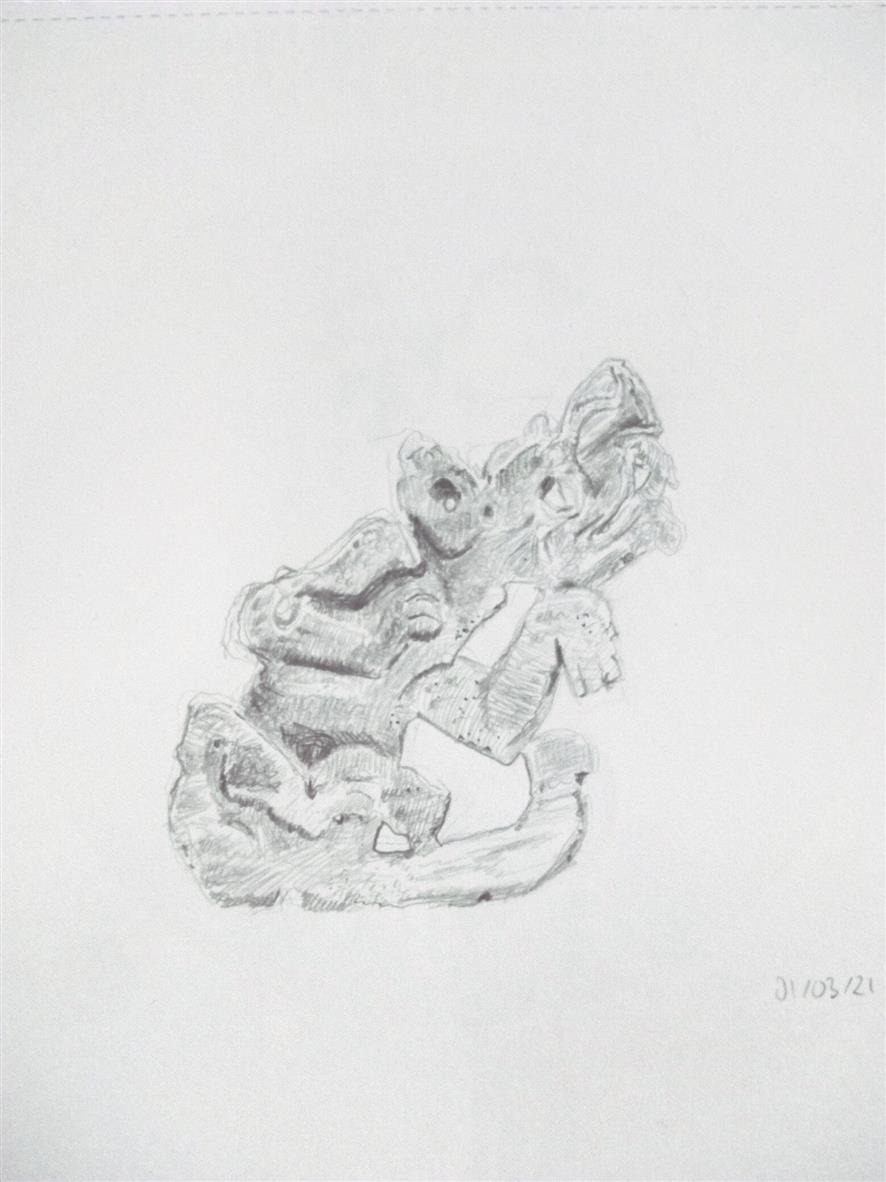
Mayan Shell Ornament
Created
March 1st, 2021 , uploadedMarch 2nd, 2021 . Mechanical pencil. -
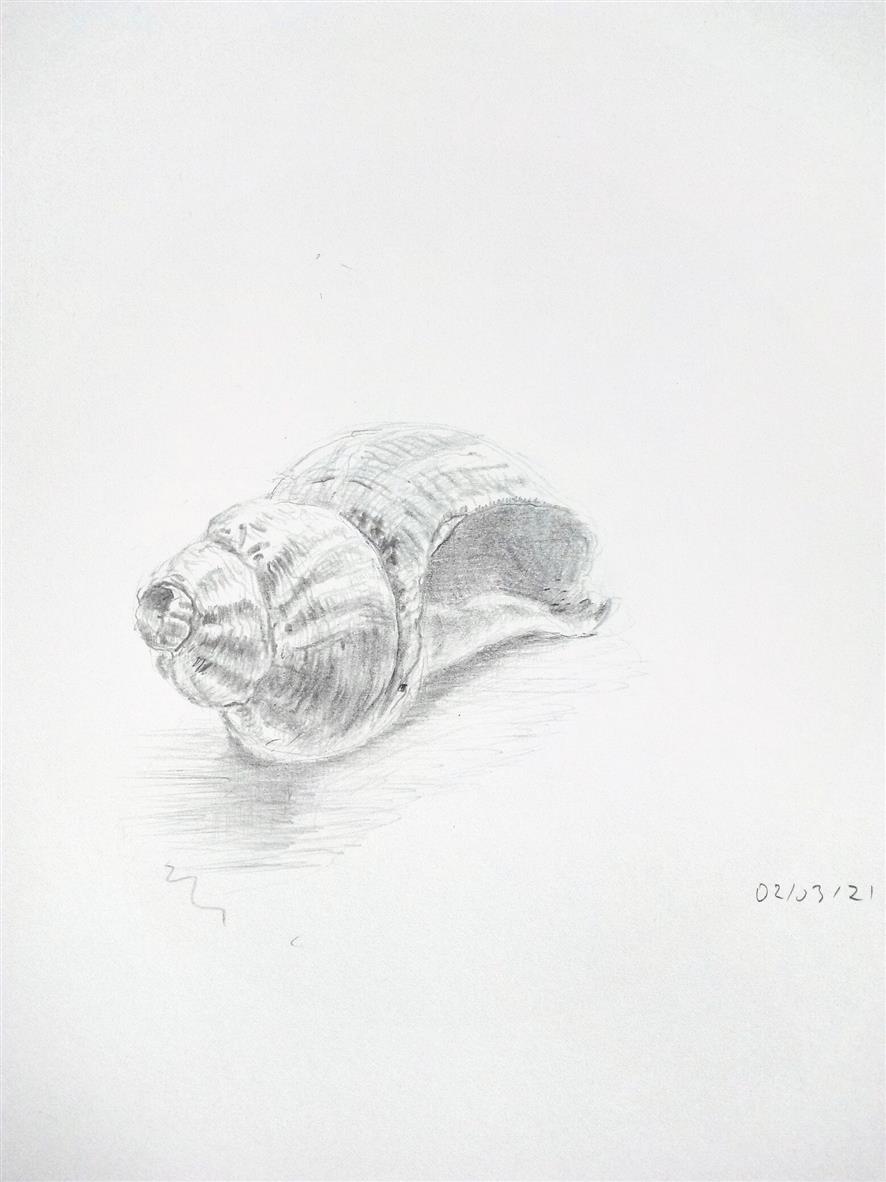
Seashell from Blackrock
Created
March 2nd, 2021 , uploadedMarch 2nd, 2021 . Mechanical pencil.
Silk scarves
I was checking a few of these out on Etsy. Silk scarves look like pools or waterfalls of liquid. Many of them have patterns - I'm into paisley and damask patterns, but the colours are important. My favourite colours are purple and green. (Pretty cool, by the way, how patterns tend to be named for places, an interlacing of geography and historical trade and travel routes with visual culture and craft knowledge, muscle memory, in the language itself - BADASS. Here at Orichalcum Have I we're very much about the colour and texture of exotic words, loanwords and ancient words worn down and changed by time.)
Gems
Did you know there's a program for designing your own gem cuts? Actually there are a few out there but GemCad looks really cool - I appreciate the old-school website as well.
Gems can be made of semi-precious stones which I really like, for example Tiger's Eye which has amazing bands of light running across it. (Funny enough, speaking of eyes you've also got bird's eye which is a rare effect where polished wood shows mysterious swirling dots in the grain.)
I love semi-precious stones featuring cloudings, tintings, incursions, veinings and lacings of complementary colours. Blue and gold, and orange and green, and maybe orange and grey are nice combinations. Especially when you get into veins of gold and crystal geodes, we're talking magnificent, exuberant, encrusted, scintillating, coruscating cascades of fine folds and crinklings of highly contrasting colours. Recently I've been having a few visions of these in my head, and they look rather like the textural details of Gustave Moreau's lovely (NSFW!) painting, Galatea.
Glass
I recently saw this lovely figurine, designed by Marcel-André Bouraine and produced by Gabriel Argy-Rousseau, and realised how awesome fused glass is. At least, I believe that's the general term for this: chunks of glass (the bigger, the more transparent the final result) melted in a mould made using a lost-wax technique. There are variously coloured variations of this statuette out there, but I love this green-toned one. It would be so hard to render in WebGL - a challenge I'd love to take up one day.
Things I like that aren't materials
This section is for other beautiful things that aren't exactly substances, nor concepts, but that fit the mood.
Birds
Well, the first lockdown here in my Irish suburb was particularly good for appreciating quietness. Some days there'd be stretches when no car was audible. The garden birds (this was last spring, in 2020) absolutely loved it. I learned the blackbird's distinctive major triad motif with a bent third. Birds, I believe, were understood as bringing spiritual messages by the Ancient Romans. At the very least, I interpret snatches of birdsong, or the presence of birds outside my window on the telephone wires or trees, as a reminder to be present.
I moved out to an even quieter estate two months ago. Just want to report that the bird activity is incredible. They seem to really like the rangy, ivy-covered tree right outside my window. There's thrushes, finches, blue tits, coal tits (I think) and of course the usual suspects, magpies, blackbirds and gulls. But loads and loads of them. I think the larger birds like letting the small ones scout out food.
Misty mountains
It delighted me when, as a kid, I realised I could simulate atmospheric perspective when painting mountain ranges, by fading them into blue. We don't have epic mountains in my country, though on the way to County Cork you can see some lovely ones that might have their upper reaches swathed in rainclouds (though I'm not certain, I think my memory must be of the Galtees). Misty mountains (I use the term as a gentle nod to Tolkien, that master of evoking the rhythm of walking through a landscape, in the rhythm and pace of prose) can appear pink and purple in photos taken at sunrise, or peach- or bruise-coloured during dusk or a storm.
Badlands
There are definitely no badlands in Ireland - unless you count the Burren, a karst landscape of deeply furrowed and burrowed pale grey limestone (which I associate with certain calm, accepting, grim and patient states of my personality via the metaphor of "bedrock"). But I love depictions of American canyons, buttes and mesas very much, particularly those in Bill Watterson's Calvin and Hobbes cartoons. As a matter of fact, I am very fond of many drawings of rockfaces and cliffs. There's something about this subject that brings out an artist's natural pen stroke - the texture of their mind (and the music in their hand!). Hergé as well as the masters of E.C. era (1950s pulp comics) come to mind. I have done a couple of studies of these in my sketchbook and it's a subject I intend to revisit!
Insects
I have a thing for iridescent dragonflies. (Other invertebrates iridesce too: beetles - my God, I've been checking out pictures of beetles with green shells, I'm amazed at the depth of dark, glowing colour on those dimpled, metallic wingcases; weevils such as the nettle weevil with its irregular bright hairs that seem to stand proud of, and then at other spots blend into, its dark shell; damselflies.) There is a lovely river bend in Co. Wicklow that I go to in my mind sometimes. One time when I was there in real life, I saw, on a rock by the riverside, two blue wings from a dragonfly that some creature must have munched.
Temples
I love looking at photos of Chinese temples such as White Horse Temple, Luoyang. Old, well-made institutional buildings have a calm energy. It's nice to detect that mood - wherein even awkward architectural juxtapositions, garish decorations or bathetic details have all been somehow made perfectly acceptable by long passage of ritual, cyclic time - in a non-Western garb. (I love Christian cathedrals and small churches very much too, but they come with a whole lot of baggage that I don't want leaching into this page too much right now. The same could be said for Greek and Egyptian ruined temples.)
Tree trunks
No need to say too much here. Tree trunks carry a lot of personality. So many different kinds of bark fissures, often in pied patches alternating between textures. Then there are the muscle-like curves and channels in the main trunk where it feels like a branch is straining to split off, but is still fused. Often there's an overall lean. Then you've got the circular scars of removed branches, plus the long triangular channels or niches at the bottom heralding splitting roots. I've been drawing a fair few tree trunks recently, but I have a long way to go.
-
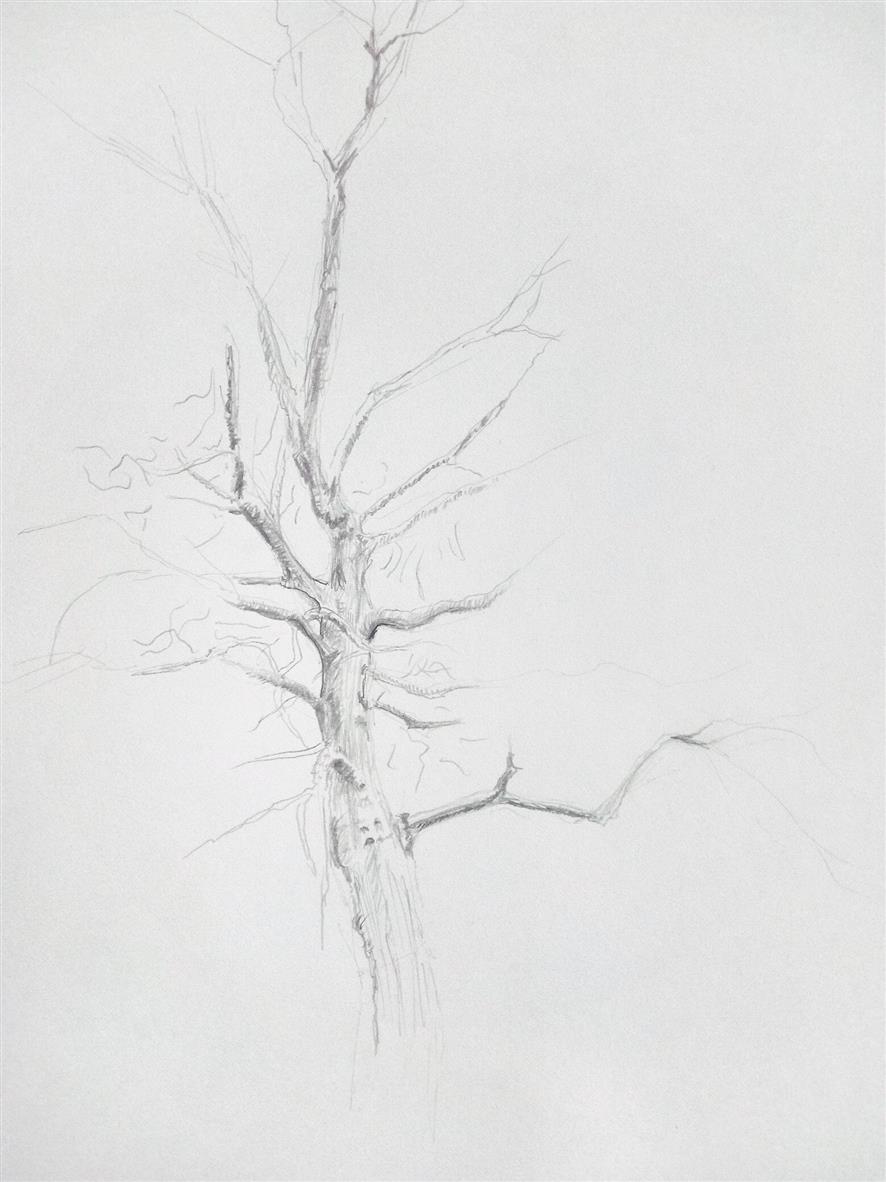
Tree Spirit
Created
February 23rd, 2021 , uploadedMarch 2nd, 2021 . Mechanical pencil. -
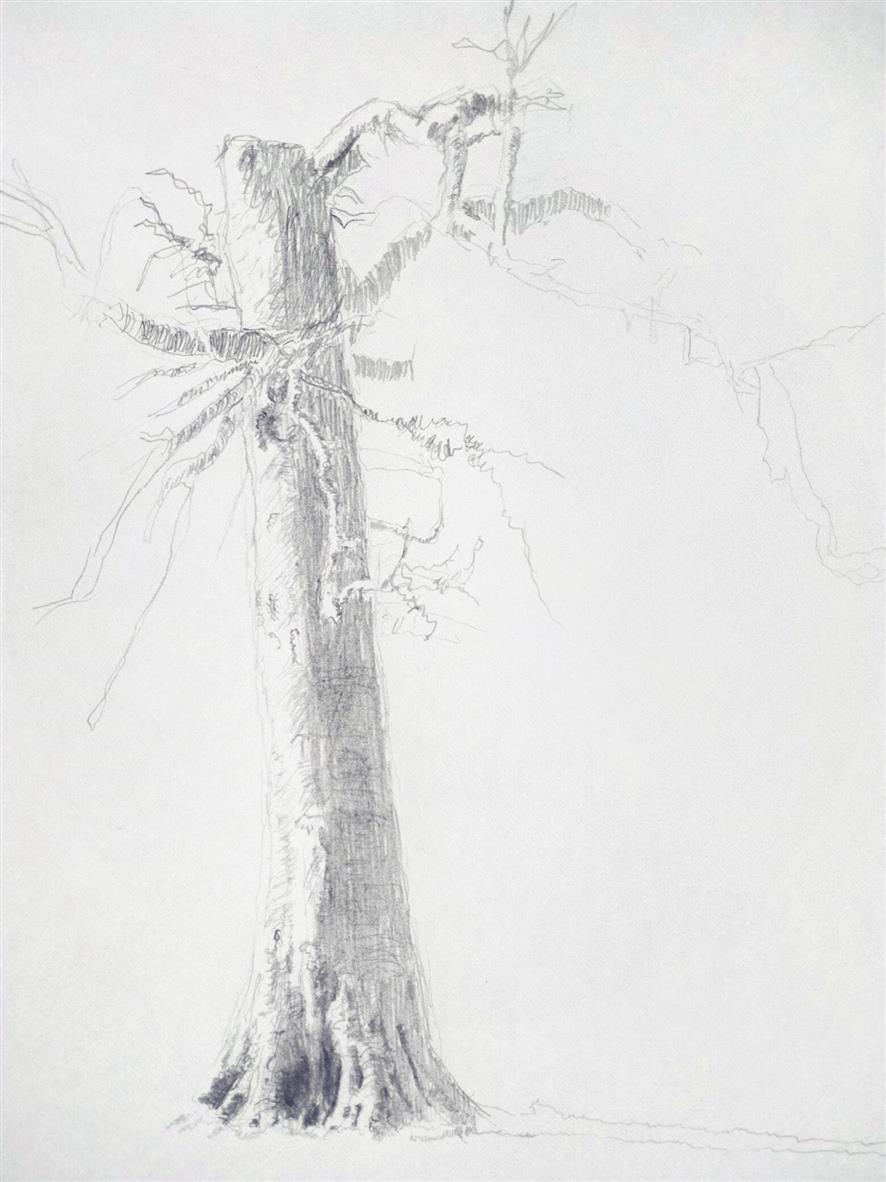
Another Tree Spirit
Created
February 26th, 2021 , uploadedMarch 2nd, 2021 . Mechanical pencil. -

Barkskin
Created
March 23rd, 2021 , uploadedApril 16th, 2021 . Mechanical pencil. -
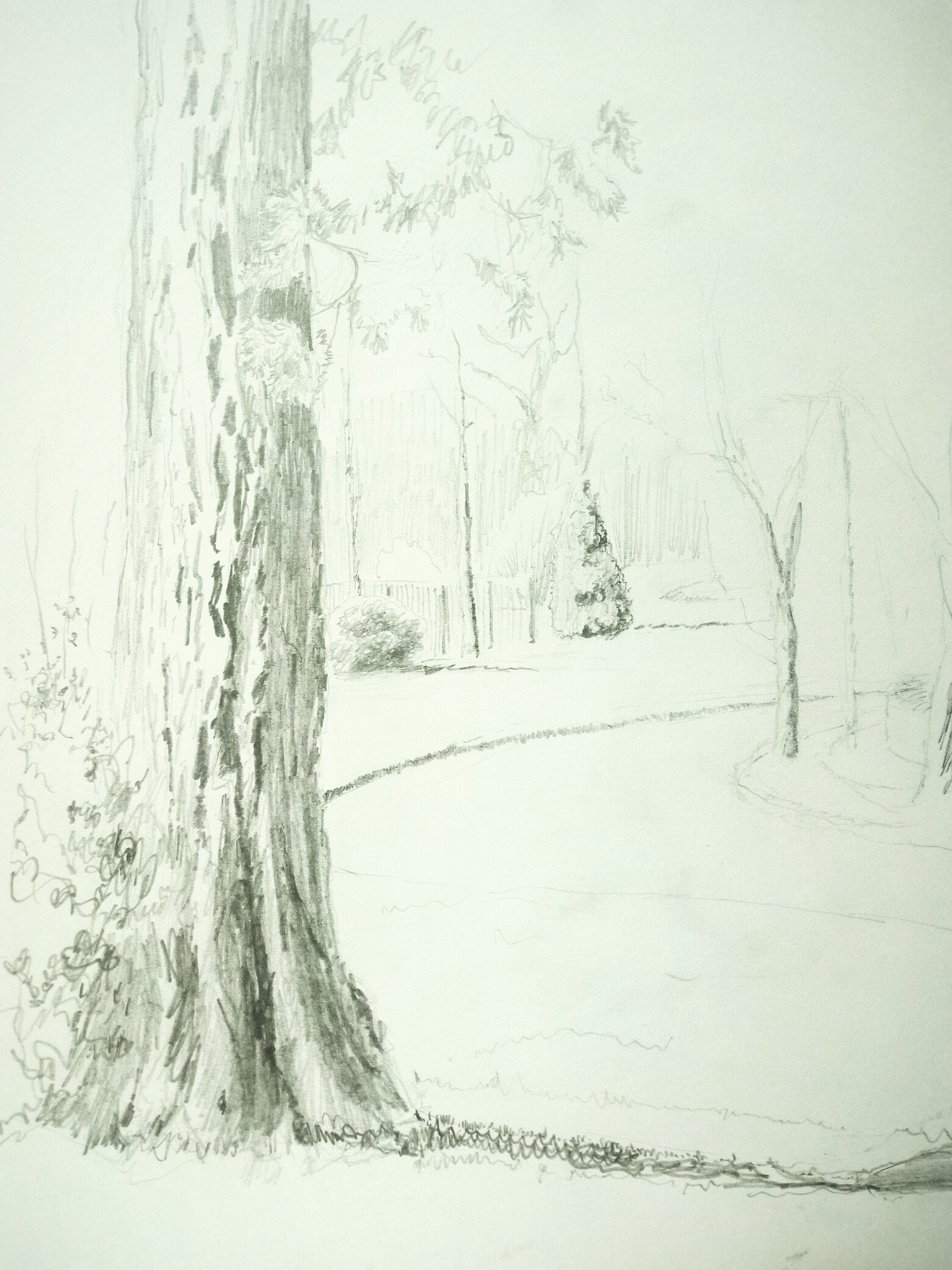
Around Roebuck Castle
Created
April 3rd, 2021 , uploadedApril 16th, 2021 . Pencil. -
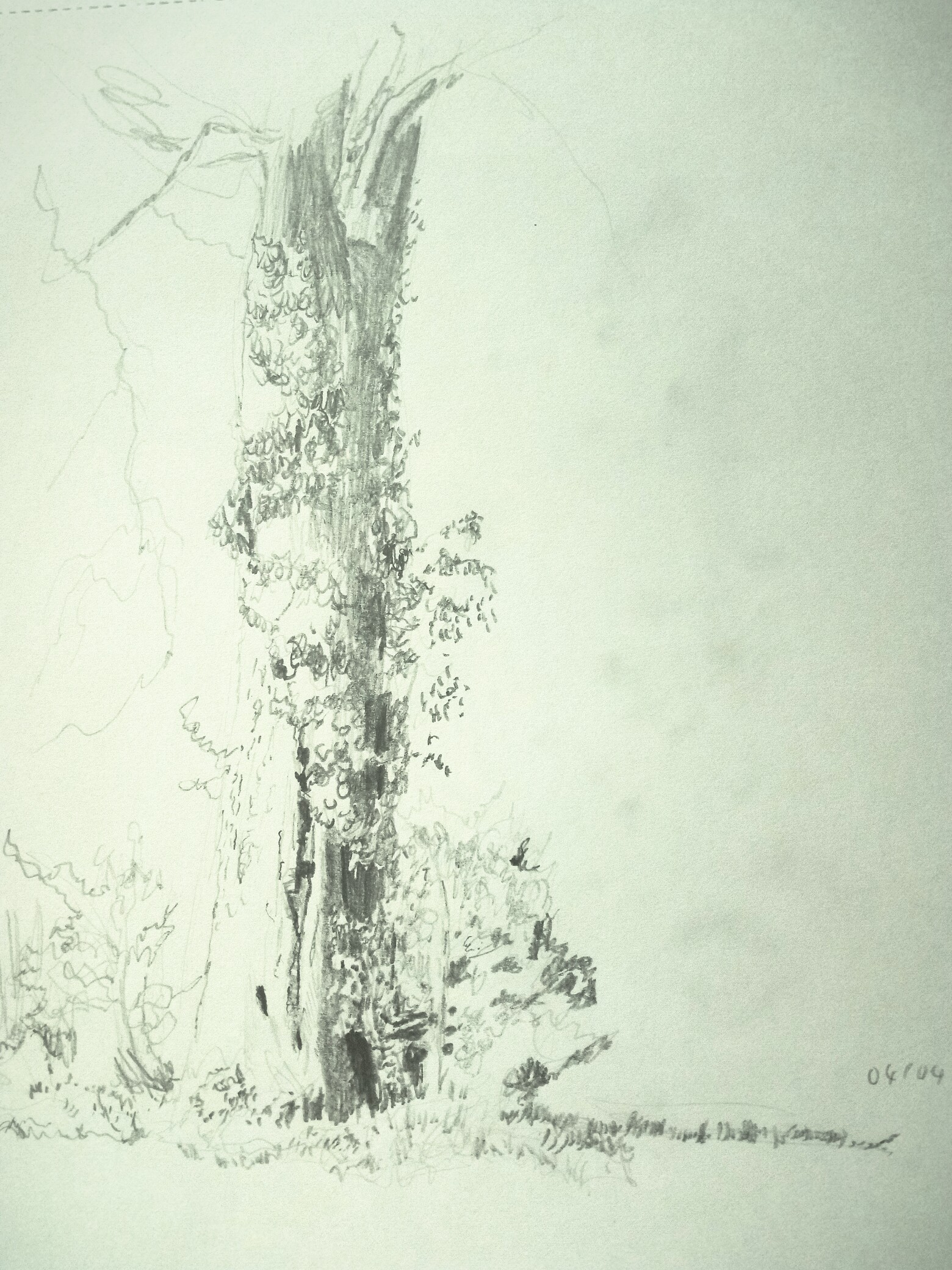
Bearded
Created
April 4th, 2021 , uploadedApril 16th, 2021 . Pencil.
Flowers
Today I drew a pistil of a flower (I copied it from a line illustration in a book, more of a graphic element than a lifelike impression). I have some ideas for using shapes of plants, such as seed pods and bulbs as well as flower parts, as shapes to frame drawings. In general, I really hope to do a lot of drawing this Spring when, um, you know, nature reawakens and all that kind of thing. I might do some of the drawing indoors using plant parts picked from nature, arranged on a sheet - I believe this technique could allow a more 2D, decorative approach.
Flowers often have great names, such as "corydalis".
In the last while I've drawn a few more flowers from that book. However, the daffodils and crocuses are fully in bloom these days, so for the rest of the spring I hope to draw plants from life!
Today I found out about sweet box AKA sarcococca confusa, a plant with astoundingly good-looking leaves. They are lanceolate (spearhead-shaped) and each springs from the thin stem at angles of about 60 degrees away from that below. Their subtle colour is affected by many things at once. They have glossiness, so say in a room at dusk with a light on but a blueish sky outside the window, white and blue highlights would be seen. These highlights appear dusted on because they are disrupted by the crinkling texture of the fairly large but otherwise invisible veins. The leaves lighten in colour towards their edges and along their centre as well. They are rumpled, about half as much as basil leaves. They are also remarkably translucent! A shadow cast on the top is clearly visible beneath. Finally, the leaves are waxy and thick, so even though their flesh lightens at the sides, the fat rounded edge generally results in a line of shading along the borders. So we have a lovely long leaf ranging from the white of those brushed highlights, through nearly lime green, to a dark cool blackish green. Phenomenal.
